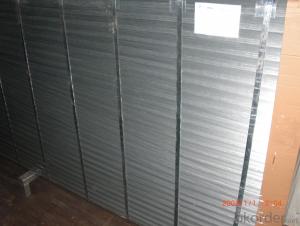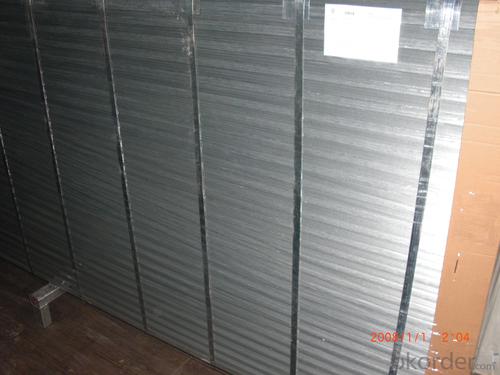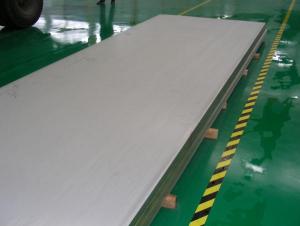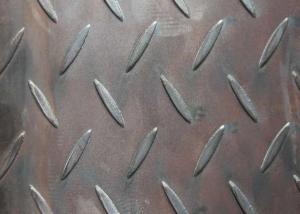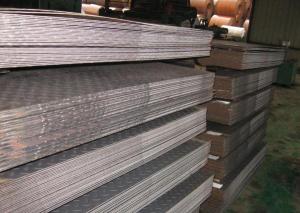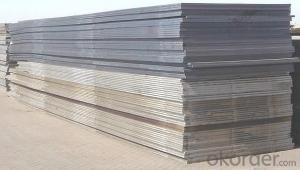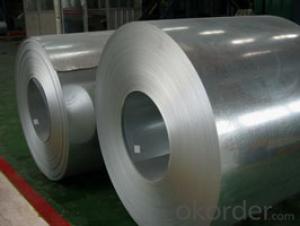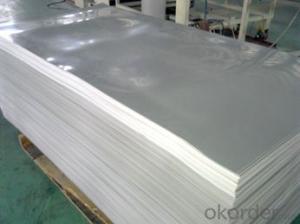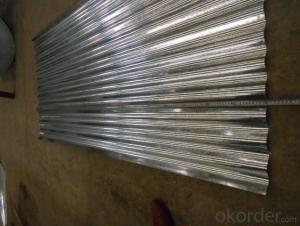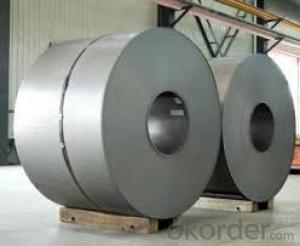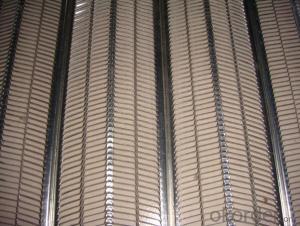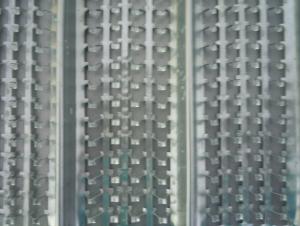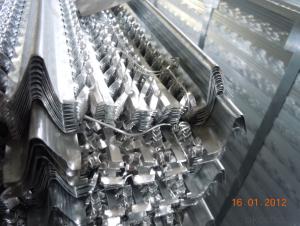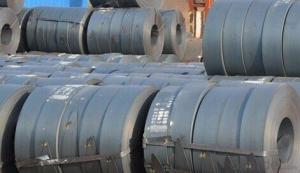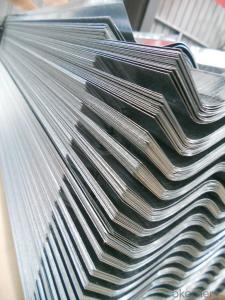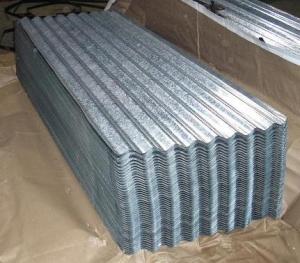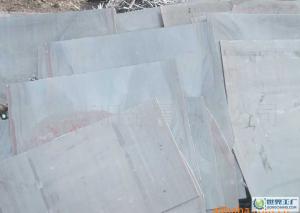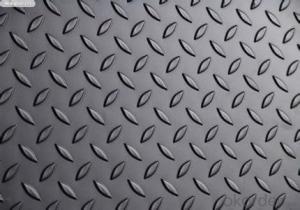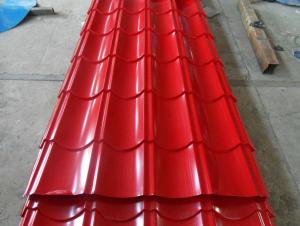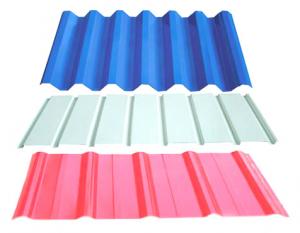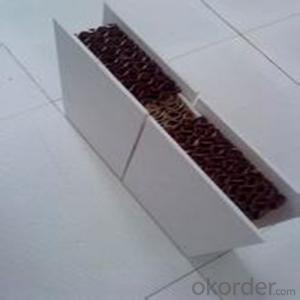GAVANIZED STEEL Rib Lath
- Loading Port:
- China Main Port
- Payment Terms:
- TT OR LC
- Min Order Qty:
- -
- Supply Capability:
- -
OKorder Service Pledge
OKorder Financial Service
You Might Also Like
GAVANIZED STEEL rib mesh is made of hot-dip zinc coated steel sheet,
It is used to be the material of untake out formwork for concret, widely used as plaster backing on ceilings, walls and stud partitions. Rib Lath is also ideal for refurbishing damaged or aged masonry walls when a key for rendering is not certain due to disintegration or softening of the wall face.
Application:
Construction formwork mesh has very good engineering quality and construction security;
Construction formwork mesh as the concrete permanent assembly
free sheet is much convenient for engineering design and processing;
Construction formwork mesh is widely used in tunnels,bridges and valve system and so on to make the process of construction much more fast and stable.
ZINC COATING: G40 WEIGHT: 4.2KG/SHEET
- Q: What are the different types of steel sheet patterns?
- There are several different types of steel sheet patterns, including diamond, checker, and raised patterns.
- Q: What is the maximum thickness of steel sheets?
- The maximum thickness of steel sheets can vary depending on various factors such as the type of steel being used, the manufacturing process, and the intended application. Generally, steel sheets can range from a few millimeters to several centimeters in thickness. However, for most common applications, the maximum thickness of steel sheets typically falls within the range of 20-30 millimeters. It is essential to consider the specific requirements and specifications of the project or application to determine the appropriate thickness of steel sheets needed.
- Q: Can steel sheets be used for solar panel support structures?
- Yes, steel sheets can be used for solar panel support structures. Steel provides excellent strength, durability, and load-bearing capacity, making it a suitable material for supporting the weight of solar panels and withstanding environmental conditions. Additionally, steel sheets can be easily fabricated and customized to meet specific design requirements for solar panel installations.
- Q: What are the different quality standards for steel sheets?
- There are several different quality standards for steel sheets, which are used to ensure that the material meets specific requirements and is suitable for its intended use. Some of the most common quality standards for steel sheets include: 1. ASTM A36/A36M: This standard specifies the requirements for carbon structural steel, including steel sheets, used in general structural purposes. It outlines the chemical composition, mechanical properties, and other relevant factors. 2. ASTM A568/A568M: This standard covers the general requirements for steel sheet products, including hot-rolled, cold-rolled, and coated sheets. It provides specifications for dimensions, tolerances, and surface quality. 3. EN 10130: This European standard specifies the requirements for cold-rolled low carbon steel flat products, including steel sheets. It outlines the chemical composition, mechanical properties, and other relevant factors. 4. JIS G 3302: This Japanese industrial standard covers the requirements for hot-dip zinc-coated steel sheets and coils. It includes specifications for the coating weight, surface finish, and mechanical properties. 5. ISO 3574: This international standard specifies the requirements for cold-reduced carbon steel sheet of commercial and drawing qualities. It provides guidelines for dimensions, tolerances, and mechanical properties. 6. GB/T 2518: This Chinese national standard outlines the requirements for continuous hot-dip zinc-coated steel sheets and coils. It includes specifications for the coating weight, surface finish, and mechanical properties. These quality standards help ensure that steel sheets are produced and supplied with consistent properties and characteristics, making them suitable for various applications such as construction, automotive, manufacturing, and more. It is important for manufacturers, suppliers, and end-users to adhere to these standards to ensure the quality and reliability of steel sheet products.
- Q: What material can be replaced by 345D steel plate?
- Higher than its level of material of steel plate can replace.Q345D. yield in more than 345 of the steel.D class -20 degree of shock. Can replace the Q370D.Q390D.Q420D.Q460D.Q550D.Q690D., generally in engineering machinery can be higher generation low.Steel plate is made of molten steel, cooled and compressed into flat steel. The steel plate is flat, rectangular, and can be rolled directly or cut from a wide strip of steel. Steel plate by thickness, thin steel plate <4 mm (thinnest 0.2 mm), thick steel plate 4~60 mm, extra thick steel plate 60~115 mm.
- Q: What is the weight of a standard steel sheet?
- The weight of a standard steel sheet can vary depending on its dimensions and thickness. However, a commonly used gauge is 20, which has a weight of approximately 9.81 pounds per square foot.
- Q: How do steel sheets compare to wood sheets?
- Steel sheets and wood sheets have distinct differences in terms of strength, durability, and use cases. Firstly, steel sheets are known for their exceptional strength and durability. They can withstand heavy loads, extreme weather conditions, and are highly resistant to warping, rotting, and insect damage. Wood sheets, on the other hand, are less robust and can be vulnerable to moisture, termites, and decay if not properly treated or maintained. In terms of versatility, steel sheets offer a wide range of applications. They are commonly used in construction, automotive, and manufacturing industries due to their high tensile strength and structural stability. Wood sheets, on the other hand, are often used in interior design, furniture making, and smaller-scale construction projects due to their natural aesthetic appeal and ease of manipulation. Additionally, steel sheets are fire-resistant, making them a safer option compared to wood sheets, which are combustible and can contribute to the spread of fire. Steel sheets also have a longer lifespan, requiring less maintenance and replacement compared to wood sheets, which may need regular refinishing, sealing, or replacement due to wear and tear. However, wood sheets have their advantages as well. They are typically more cost-effective than steel sheets, making them a popular choice for budget-conscious projects. Wood sheets also have better insulation properties, providing natural warmth and soundproofing qualities. Ultimately, the choice between steel sheets and wood sheets depends on the specific requirements of the project, including factors such as budget, desired aesthetics, structural needs, and environmental considerations.
- Q: What are the different grades of steel sheets available?
- There are several different grades of steel sheets available, including mild steel, stainless steel, galvanized steel, high-strength low-alloy (HSLA) steel, and carbon steel. Each grade has unique properties and is suitable for various applications in industries such as construction, automotive, and manufacturing.
- Q: Are the steel sheets susceptible to rusting?
- Yes, steel sheets are susceptible to rusting. Rust is the result of a chemical reaction between iron, oxygen, and moisture. Since steel is primarily made of iron, it can easily corrode when exposed to air and water. However, the extent of rusting depends on various factors such as the type of steel, environmental conditions, and the presence of protective coatings. In order to prevent rusting, steel sheets are often coated with materials like zinc or paint to create a barrier between the steel surface and the surrounding environment. Regular maintenance and proper storage can also help minimize the risk of rust formation on steel sheets.
- Q: What are the different sheet metal welding techniques for steel sheets?
- Steel sheets can be joined using various sheet metal welding techniques. The most commonly used methods are as follows: 1. MIG welding, also known as Gas Metal Arc Welding (GMAW), involves the use of a continuous wire electrode to create an arc and join the steel sheets. This technique is versatile and efficient, suitable for both thin and thick sheets. 2. TIG welding, or Gas Tungsten Arc Welding (GTAW), utilizes a non-consumable tungsten electrode to create an arc and join the steel sheets. It produces high-quality welds with excellent control, making it ideal for thin or delicate sheet metal. 3. Resistance Spot Welding (RSW) involves applying pressure and passing a high electrical current through the steel sheets using two electrodes. This causes the sheets to fuse together swiftly and cost-effectively. It is commonly used in the automotive and manufacturing industries. 4. Laser Welding employs a high-energy laser beam to melt and join the steel sheets. The technique offers precise control, high welding speeds, and minimal heat input, making it suitable for thin and highly reflective materials. 5. Electron Beam Welding (EBW) utilizes a focused beam of high-velocity electrons to create a weld. It offers deep penetration and is often used for thick steel sheets or applications requiring high-quality welds. 6. Plasma Arc Welding (PAW) is similar to TIG welding but utilizes a plasma arc to create a weld. This technique provides higher welding speeds and can be used for both thick and thin steel sheets. The choice of welding technique depends on various factors such as the thickness of the steel sheets, desired weld quality, production volume, and available equipment. Each method has its own advantages and limitations.
Send your message to us
GAVANIZED STEEL Rib Lath
- Loading Port:
- China Main Port
- Payment Terms:
- TT OR LC
- Min Order Qty:
- -
- Supply Capability:
- -
OKorder Service Pledge
OKorder Financial Service
Similar products
Hot products
Hot Searches
Related keywords
